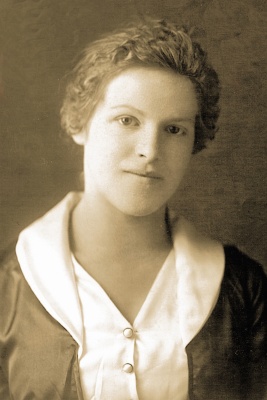My paternal grandmother was my age when she died. I was startled to discover this recently when I studied with fresh eyes the span of dates that comprised her life. Funny, she had seemed so old to me the last time I saw her when I was seventeen.
What wouldn’t I give to sit down with her now, two women the same age, and catch up on the events of each other’s lives? We’d sit at her green Formica table in her sunny yellow kitchen with the marble-patterned linoleum on the floor. As we chatted, we would look out the picture window to the tiny manicured yard edged in pansies she had planted on her hands and knees in her house dress, since women of her generation didn’t wear pants, even for gardening. We would share something good to eat, maybe a piece of her famous coconut cream pie, because she was a woman who went out of her way for company.
I would be a better listener now than I was when she tried to tell me the story about her parents, Ada Johnson and Paul Nelson, who emigrated from Sweden when they were teenagers and met each other in Kentucky working in the same hotel. They married young, eventually parenting eleven children, of which Grandma was the eighth. The family was living in Pueblo, Colorado, in 1903 when my grandmother was born. Ada and Paul named her Ethel May.
About ten years ago, I found the 1910 census record that showed where the Nelson family lived in Pueblo. Later, on a vacation to Colorado, I drove to that address on Elm Street and parked my car at the curb. A small, white, wood-framed house stands on that property and could very well be the Nelson home, given its weathered, dilapidated state. I stood on the sidewalk in front of the house, taking pictures, my mind whirling with unanswered questions. A few blocks away, I found Pueblo Smelters where Paul Nelson worked, within walking distance of home. Large, grey, and rusty, the steel plant still stands, a silent, decaying remnant of the noisy thriving enterprise it must have been in its day when it employed most of the men in Pueblo.
Between bites of coconut pie, I’d ask my grandmother how a family so large managed to make a life in a house so small, how her father could earn a living for thirteen on the salary he earned as a steelworker. Continue reading

